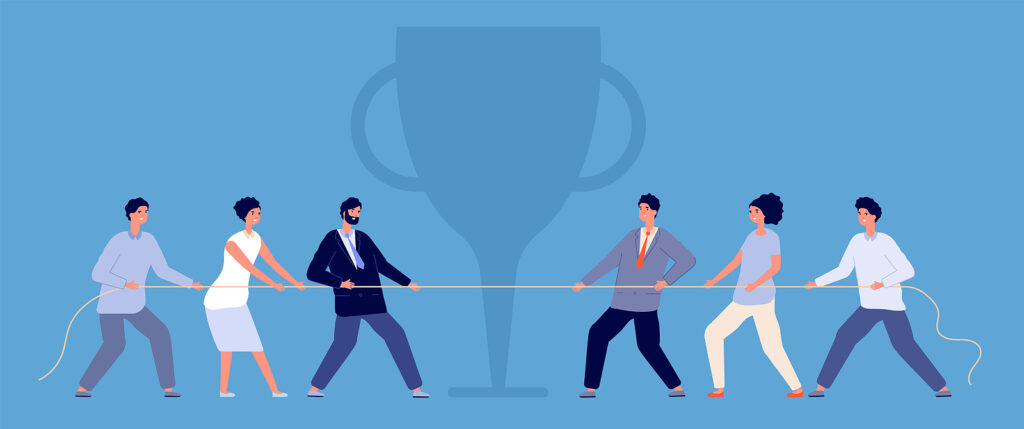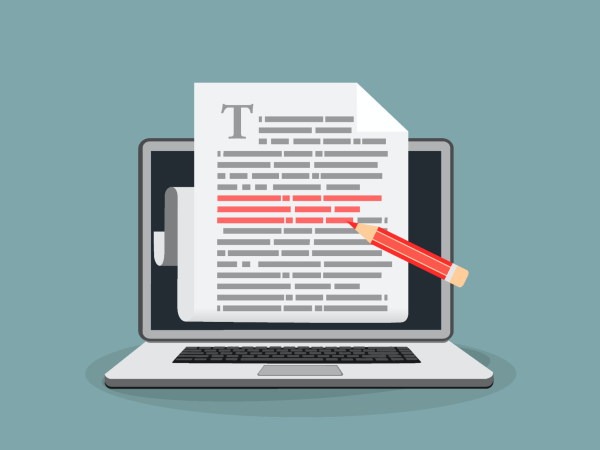Welcome, students! Whether you’re just starting your academic journey or already deep into your studies, you’ll quickly discover that certain terms are ubiquitous in both academic and business environments.
These terms—like “competitive rivalry”—are more than just jargon; they are concepts that shape industries and influence decisions at every level. Understanding these terms, and more importantly, knowing how to apply them in real-world scenarios, is crucial to your success both in school and in your future career.
In this blog post, we’ll dive into the concept of competitive rivalry, exploring some of the most iconic examples from the business world. By the end, you’ll not only understand what this term means but also how to think critically about it in various contexts. Let’s get started!
Coca-Cola vs. PepsiCo
- Brand Identity and Marketing: Coca-Cola and PepsiCo have cultivated strong brand identities that appeal to different segments of consumers. Coca-Cola emphasises its heritage and classic image, often using nostalgia in its marketing. Pepsi, on the other hand, has frequently positioned itself as the youthful, contemporary alternative, exemplified by its “Pepsi Generation” campaigns.
- Product Diversification: Both companies have expanded their portfolios beyond carbonated soft drinks to include water, juices, energy drinks, and snacks. PepsiCo’s acquisition of brands like Tropicana, Gatorade, and Frito-Lay illustrates its strategy to diversify, while Coca-Cola has invested in brands like Minute Maid, Dasani, and Smartwater.
- Global Expansion: The rivalry extends globally, with both companies tailoring their product offerings to local tastes and preferences. For example, Coca-Cola’s strategy in Asia includes offering less sweetened versions of its drinks, while PepsiCo has introduced products with regional flavors to appeal to local markets.
- Sustainability Initiatives: Both companies are also competing on sustainability, trying to appeal to environmentally conscious consumers. Coca-Cola has launched initiatives like “World Without Waste,” aiming to collect and recycle every bottle or can it sell by 2030. PepsiCo has similar goals with its “Beyond the Bottle” initiative and efforts to reduce plastic use.
Apple vs. Samsung
- Innovation and Technology: Apple and Samsung constantly push the boundaries of smartphone technology. Apple is known for its ecosystem of devices and services, with seamless integration between products like the iPhone, iPad, Mac, and Apple Watch. Samsung, on the other hand, often leads in hardware innovation, such as pioneering large-screen smartphones with its Galaxy Note series and introducing foldable phones with the Galaxy Fold.
- Legal Battles: The rivalry has also played out in the courtroom. Apple and Samsung have engaged in numerous patent infringement lawsuits, with Apple claiming that Samsung copied the design and functionality of the iPhone. These legal battles have been costly and protracted, reflecting the high stakes of their competition.
- Market Positioning: Apple’s strategy has focused on premium pricing and brand loyalty, positioning its products as luxury items. Samsung offers a broader range of products, including high-end models that compete directly with the iPhone, as well as more affordable options that cater to a wider audience.
- Global Reach: Both companies have a strong global presence but with different market dynamics. Apple has a dominant position in markets like the U.S. and Japan, where its brand is particularly strong, while Samsung has a larger market share in regions like Europe, South Asia, and the Middle East, often offering models specifically designed for those markets.
Nike vs. Adidas
- Endorsements and Sponsorships: A significant aspect of the Nike vs. Adidas rivalry is their battle for high-profile athlete endorsements and sports sponsorships. Nike has long been associated with iconic athletes like Michael Jordan and LeBron James, while Adidas has secured deals with stars like Lionel Messi and James Harden. These endorsements are critical for brand image and influence consumer purchasing decisions.
- Product Innovation: Both companies invest heavily in R&D to create innovative products. Nike’s introduction of technologies like Air cushioning and Flyknit has set trends in the industry. Adidas has responded with its Boost technology and collaborations with designers and celebrities like Kanye West for the Yeezy line, which has been a massive success.
- Cultural Influence: Beyond sports, Nike and Adidas compete in the fashion and streetwear markets. Nike has collaborated with designers like Virgil Abloh for the Off-White collection, while Adidas has worked with fashion icons like Pharrell Williams. This crossover into fashion has allowed both brands to maintain relevance among younger, trend-conscious consumers.
- Sustainability Efforts: As consumer awareness of environmental issues grows, both companies have ramped up their sustainability initiatives. Nike has focused on reducing waste with initiatives like Nike Grind, which turns old sneakers into materials for new products. Adidas has pioneered products like the UltraBoost made from ocean plastic, in collaboration with the organisation Parley for the Oceans.
McDonald’s vs. Burger King
- Menu Innovation: McDonald’s and Burger King frequently introduce new menu items to attract customers and differentiate themselves. McDonald’s has focused on breakfast items, expanding its offerings with all-day breakfast in some markets, while Burger King has introduced items like the Impossible Whopper, a plant-based burger that taps into the growing trend of vegetarianism and veganism.
- Pricing Strategies: Both chains use competitive pricing as a key strategy. They have rolled out value menus and meal deals to attract budget-conscious customers. McDonald’s Dollar Menu and Burger King’s 2-for-$5 Mix and Match are examples of this strategy in action.
- Global Strategies: McDonald’s has adapted its menu to local tastes around the world, such as offering McSpicy Paneer in India and McArabia in the Middle East. Burger King also localises its menu but often uses a different strategy by introducing limited-time offers to create buzz, such as its black-bunned Halloween Whopper in Japan.
- Advertising Wars: The rivalry is also evident in their advertising campaigns, with each brand often taking subtle (and sometimes not so subtle) digs at the other. For example, Burger King has run campaigns directly comparing the size and taste of its burgers to McDonald’s, positioning itself as the superior choice.
Uber vs. Lyft
- Service Differentiation: Uber and Lyft offer similar ride-hailing services, but they differentiate themselves through unique features and branding. Uber has a broader global presence and offers a variety of services, including UberX, UberPool, and Uber Eats. Lyft, while primarily U.S.-based, emphasises a more community-driven, friendly approach, often branding itself as the more customer-focused alternative.
- Driver Incentives: Both companies compete for drivers by offering bonuses, higher payouts, and incentives. For example, Uber has introduced programs like Uber Pro, which offers rewards based on driver performance. Lyft has responded with initiatives like Express Pay, allowing drivers to cash out their earnings instantly.
- Regulatory Challenges: Uber and Lyft face regulatory challenges worldwide, and their approaches to these challenges differ. Uber has often taken a more aggressive stance, entering markets even when faced with regulatory opposition, while Lyft tends to be more collaborative with local governments. Their strategies in dealing with these issues reflect their broader corporate philosophies.
- Technological Advancements: Both companies are investing in autonomous vehicle technology as a potential game-changer for the industry. Uber has partnered with various companies to develop self-driving cars, while Lyft has its Level 5 division focused on autonomous vehicle research. This race to innovate could determine the future leader in the ride-hailing space.
Airbus vs. Boeing
- Aircraft Development: Airbus and Boeing are in constant competition to develop more efficient, safe, and advanced aircraft. Airbus’s A320 family competes directly with Boeing’s 737, with each company striving to offer airlines better fuel efficiency and lower operating costs. The competition extends to larger aircraft as well, such as the Airbus A350 versus the Boeing 787 Dreamliner.
- Customer Relationships: Both companies compete fiercely for contracts with major airlines. Securing these contracts often involves not just the sale of aircraft but also long-term service agreements, training, and maintenance packages. Boeing’s strong relationships with U.S. airlines like American Airlines and United are critical, while Airbus has been more successful in markets like Europe and Asia.
- Innovation and Safety: The rivalry also pushes innovation, with both companies investing in new materials, manufacturing processes, and technologies. However, safety issues have had a significant impact on competition. Boeing’s 737 Max crisis, involving fatal crashes and subsequent grounding of the aircraft, has given Airbus a competitive advantage as airlines turned to Airbus for alternative options.
- Trade and Government Support: The rivalry between Airbus and Boeing also involves government support and trade disputes. Airbus has received subsidies from European governments, while Boeing has benefited from U.S. government contracts and tax breaks. These issues have led to long-running disputes at the World Trade Organization (WTO), influencing the competitive landscape.
Key Takeaways
- Innovation as a Driver: Across all these examples, innovation is a key factor in maintaining a competitive edge. Whether it’s product development, technology adoption, or service enhancements, companies must continually innovate to stay ahead.
- Brand Loyalty and Customer Perception: Strong branding and customer loyalty play crucial roles in these rivalries. Companies that successfully build and maintain a positive brand image often have a competitive advantage.
- Globalization and Localization: Competing on a global scale requires a delicate balance of maintaining a consistent brand identity while also adapting to local markets. Successful companies tailor their strategies to local tastes, regulations, and competitive conditions.
- Sustainability and Corporate Responsibility: As consumers become more environmentally conscious, companies are increasingly competing on sustainability. Those that can effectively integrate sustainability into their business models are likely to gain favour with consumers and stakeholders.
Conclusion:
As you continue your studies and eventually step into the professional world, you’ll find that the concepts we discuss in class are not just theoretical—they’re happening all around us.
Competitive rivalry, as we’ve seen, is a dynamic force driving innovation, shaping industries, and determining the success or failure of businesses.
By understanding these examples and reflecting on them, you’re not just preparing for exams or assignments; you’re equipping yourself with the tools to navigate and succeed in the complex world of business.
So, next time you encounter a term that seems daunting, remember to break it down, look at real-world examples, and think critically about its application. You’ve got this!
0 Comments
Leave a reply
You must be logged in to post a comment.




